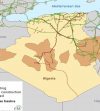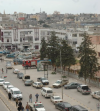The expansion of military operations in the Gaza Strip could represent an additional cost of around 15 billion Israeli newcomers (4.1 billion US dollars). The defense budget of 120 billion Israeli newcomers for 2025, of which 17 billion Israeli newcomers are intended to cover reserve service needs, could prove insufficient.
Indeed, the military plan currently being deployed has not undergone a macroeconomic assessment, although its cost could exceed 15 billion Israeli newcomers. The Ministry of Finance could certainly use the emergency fund provided for in the 2025 budget, but only 3 billion Israeli newcomers remain of the 10 billion Israeli newcomer initially earmarked for this budget. As early as March, the Bank of Israel indicated in its 2024 annual report that a resumption of high-intensity fighting would require significant measures.
The mobilization of reservists is a burden on the economy.
Reservists have a high direct cost (see the NIS 3.4 billion plan approved by the government on May 11, Briefs No. 20 – 2025) as well as an indirect cost; their requisition harms the labor market, while 20% of reservists are employed in the high-tech sector, the main driver of the Israeli economy. The occupation of the Gaza Strip would be particularly costly in the long term; according to a study by the INSS think tank, it would represent a cost of NIS 35 billion per year (NIS 25 billion of which is for military-related expenses alone).
Without a short-term ceasefire, the Israeli government will be forced to choose between three options: an increase in the 2025 budget via a supplementary budget law, which would jeopardize the achievement of the budget deficit target of 4.9% of GDP by the end of 2025 – as of May, it already stood at 5.1% of GDP; further budget cuts in ministries, although their budgets have already been significantly reduced in the 2024 and 2025 budget laws – particularly for the ministries of health and education; and tax increases, whereas the initial intention of the Prime Minister and the Minister of Finance was, on the contrary, to reduce the tax burden in the context of preparing the 2026 budget – next year will be marked by legislative elections. This third option therefore seems less likely.
The continuation of the war increases the risk premium and the debt burden. An indicator reflecting the sharp rise in the risk premium is reflected in the price of default insurance on Israeli ten-year dollar bonds (CDS). The index reached around 80 basis points (bps) before the war and has been at a high level of 140 bps since the end of the ceasefire. Furthermore, the yield on the Israeli government’s 30-year fixed-rate bond reached 5% at the end of May, for the first time since November 2024.
While the Treasury General issued a USD 5 billion debt offering in February, shortly before yields rose in March, the impact of the increased risk on the debt burden is expected to be limited in the short term. However, if the conflict continues, Israel could quickly be forced to issue a new bond abroad, which will increase the cost of debt servicing. According to preliminary estimates, it is expected to grow by NIS 11.3 billion in 2025 and by NIS 20 billion in 2026.
After downgrading Israel’s sovereign rating last year, the three major rating agencies currently maintain a negative outlook on Israel’s creditworthiness and expect the budget deficit to widen further. They believe that very high political risks are weakening the country’s economic resilience.
Source: French Embassy in Israel








 here">
here">


Réagissez à cet article